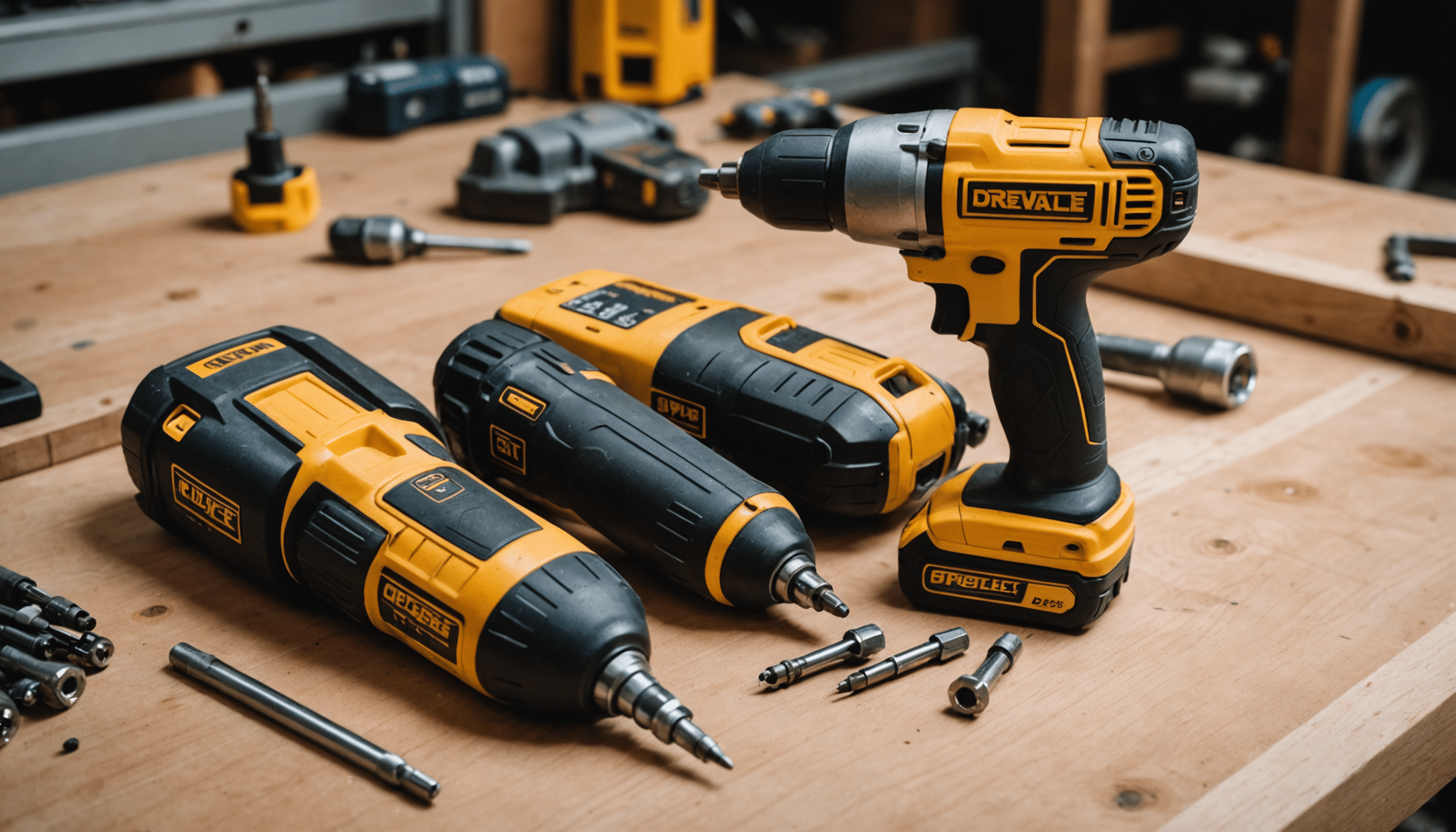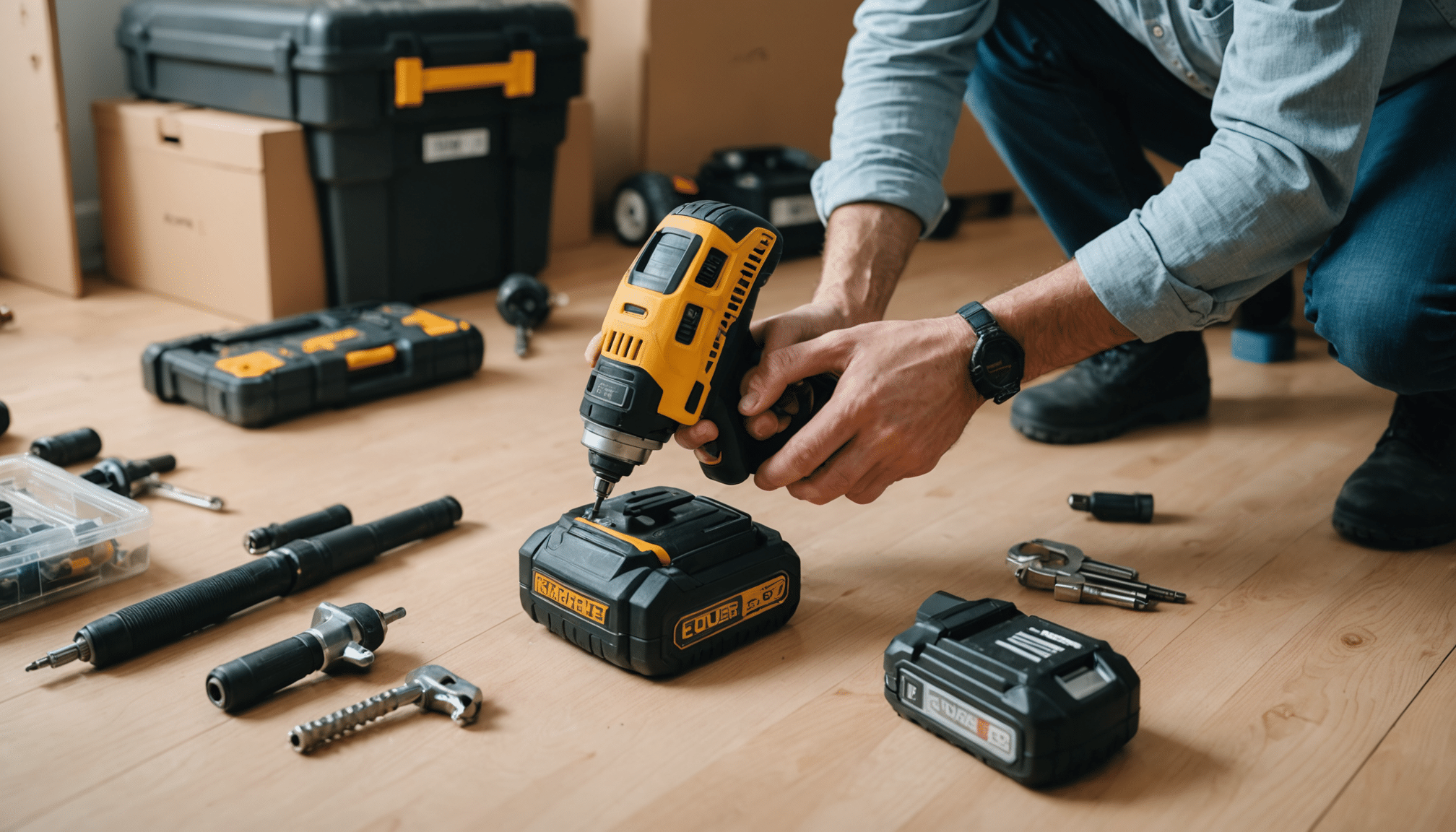
Impact Driver vs Wrench: Avoid This Common Tool Mistake
Discover the KEY DIFFERENCES between an IMPACT DRIVER and IMPACT WRENCH so you don’t pick the WRONG tool. Find the BEST TOOL for screws, bolts and more.
Choosing between an impact driver and an impact wrench can be confusing. Both are powerful tools, but they serve different purposes. This article explains the key differences, helping you decide which impact tool suits your tasks best—whether for automotive jobs, DIY projects, or when torque and efficiency matter most.
What’s the difference between an impact driver and wrench?
An impact driver is best for driving screws and light fasteners with high speed and control. An impact wrench delivers much higher torque, ideal for loosening or tightening nuts and bolts, especially in automotive tasks. The right choice depends on your specific fastening needs.
When to Choose Each Impact Tool
- Use an impact driver for light-duty screw and fastener tasks.
- Pick an impact wrench when you need high torque for bolts and nuts.
- Choose a cordless impact driver for indoor DIY like furniture assembly.
- Go for a cordless impact wrench for automotive or outdoor mechanical work.
- If precision matters, the impact driver is typically more compact and controlled.
- Select a tool based on the fastener type—hex for drivers, socket for wrenches.
- For versatility across tools, check battery system compatibility before buying.

Key Differences: Impact Driver vs Wrench
Impact drivers and impact wrenches may sound interchangeable, but they’re built for different jobs. An impact driver is your go-to for driving screws and light-duty fasteners. It uses a hex chuck and typically handles tasks like decking, flat-pack furniture, or drilling into hardwood. Meanwhile, an impact wrench packs a square drive and brings much more torque—ideal for tackling bolts and lug nuts on cars or heavier machinery.
The difference in torque output is where things really separate these two. An impact driver typically delivers up to 150Nm, while an impact wrench can crank out over 1,000Nm. That means the wrench is better suited for automotive tasks or when you need to loosen rusty fasteners that haven’t budged in years. Think of it as the difference between a nimble power tool and a heavyweight contender.
Another key distinction is the way you use them. You’ll often use an impact driver with drill bits and hex screws, while the wrench works with sockets to remove or tighten nuts and bolts. Choosing the right tool isn’t just about power—it’s about precision and the type of fastener you’re dealing with. Check out impact drivers and wrenches here if you’re unsure what suits your job best.
Cordless Impact Tools for DIY & Auto
Whether you’re hanging shelves or removing lug nuts from your car, cordless impact tools offer unbeatable convenience. A cordless impact driver makes light work of screws and fasteners around the house, while a cordless impact wrench brings the grunt needed to loosen bolts during automotive repairs. The lack of cords means more freedom of movement, especially in tight spaces or awkward angles.
Battery life matters, especially if you’re doing multiple jobs. Many modern models use brushless DC electric motors for longer run times and less wear. A good cordless impact wrench often has a higher voltage battery than its driver counterpart, giving it more sustained torque. But for DIY tasks like putting together furniture or fixing that squeaky gate, an impact driver is often the smarter, lighter choice.
Don’t confuse either tool with a drill. While all three are power tools, drills are for making holes, not delivering bursts of torque. When you compare a cordless impact driver to a drill, you’ll notice the driver gives that hammer-like force that makes it easier to drive screws without stripping the heads. For automotive work, a cordless impact wrench will almost always outperform a drill or driver in torque-dependent tasks.
Buying an Impact Driver: What to Know
Not all impact drivers are created equal, and choosing the right one depends on more than just price. Consider the type of impact driver you need: lightweight models are great for tight spaces and one-handed tasks, while beefier versions provide higher torque and longer battery life. It’s a balance between weight, comfort, and sheer force.
Think about what you’ll be using it for. If your tasks involve driving screws into hardwood or working with long fasteners, go for a driver with variable speed and decent torque control. Also, check whether it comes with a hex adapter or socket accessory. That extra bit of flexibility lets you do more without switching tools mid-job.
When buying an impact driver, check battery compatibility and charging speed too. Some cordless systems let you swap batteries across different tools, saving you money in the long run. And don’t forget to factor in build quality—especially if you’ll use the tool often. For a reliable start, browse impact tools and accessories here to match your needs with your budget.
| Feature | Description | Importance |
|---|---|---|
| Torque Output | Impact wrench delivers higher torque than an impact driver. | High |
| Chuck Type | Impact drivers use hex chucks; wrenches use square drives. | High |
| Best Use | Impact driver for screws; wrench for bolts and lug nuts. | High |
| Tool Weight | Impact drivers are generally lighter and more compact. | Medium |
| Battery Life | Brushless motors improve battery efficiency on cordless tools. | Medium |
Conclusion
Knowing the key differences between an impact driver and impact wrench helps you make the right call for your task—whether it’s tightening bolts, driving screws, or tackling automotive work. It’s all about choosing the right tool with the right torque.
At Viking, we bring years of experience in workplace tools and productivity. Whether you’re working on-site or at home, our selection of impact drivers and wrenches is designed to help you work efficiently and economically—without compromising on quality or performance.
Frequently Asked Questions
Can I use an impact driver for bolts?
An impact driver can handle small bolts, but it’s not ideal for heavy-duty applications. It’s designed for driving screws and light fasteners using a hex chuck. For higher torque tasks, especially involving large bolts or nuts, an impact wrench with a square drive and socket is a better choice.
What’s better for automotive work?
An impact wrench is the preferred power tool for automotive jobs. It delivers higher torque, making it ideal for loosening stubborn lug nuts and bolts on vehicles. While a cordless impact driver is great for DIY tasks, it usually lacks the torque needed for reliable automotive fastening or repairs.
Can a drill replace an impact driver?
No, a drill is not a substitute for an impact driver. A drill offers steady rotation for making holes or using drill bits. An impact driver uses concussive force to drive screws quickly into hardwood or dense material without stripping. They serve different purposes in your tool collection.
Do impact tools damage fasteners over time?
Yes, excessive force or improper use of impact tools can wear out fasteners or strip screw heads. Choosing the right tool and matching the torque to the task is important. For example, overtightening with an impact wrench can round bolts, especially if the socket or bit isn’t properly seated.









